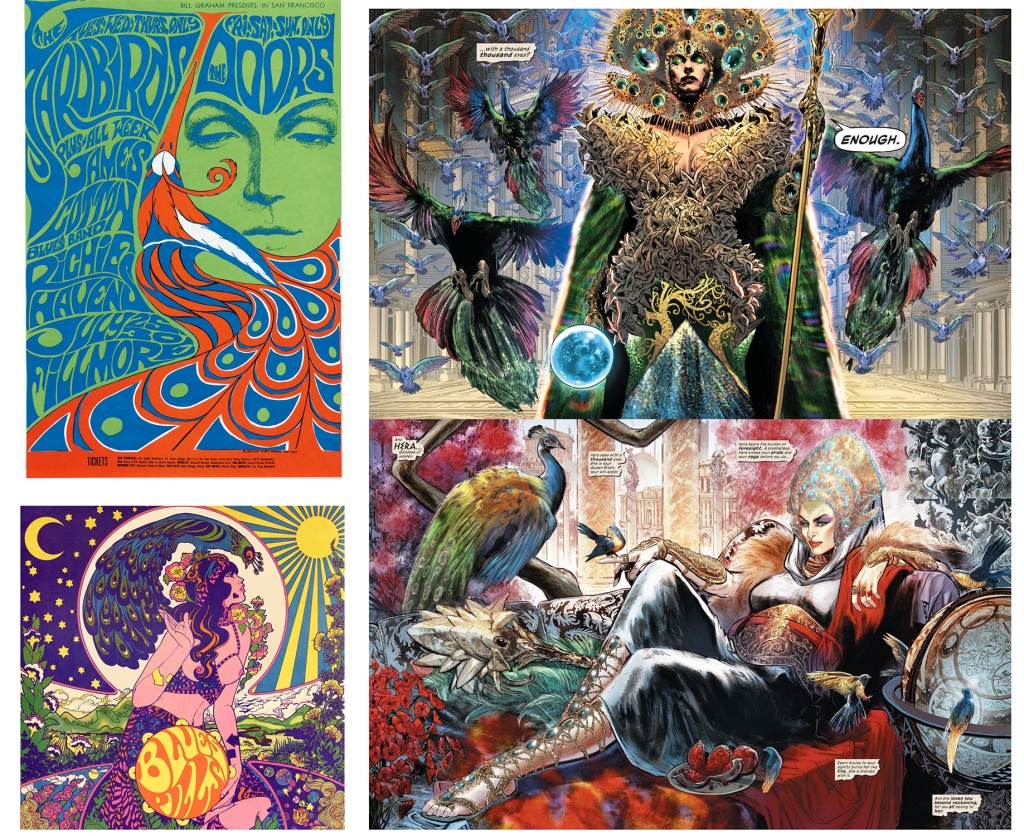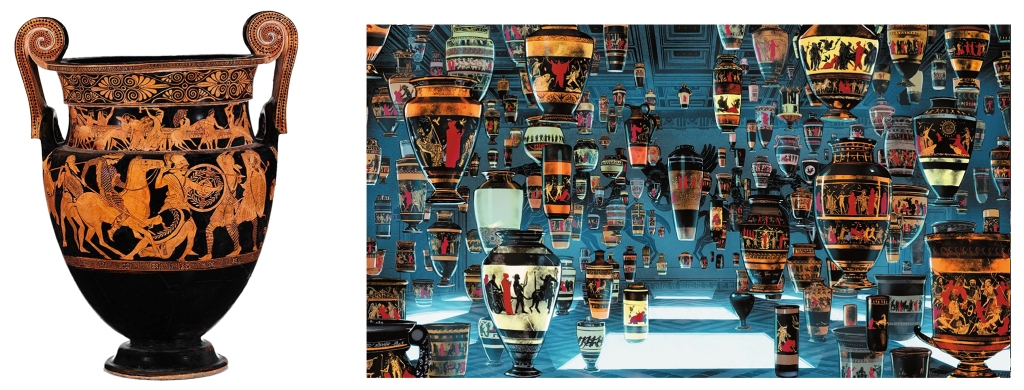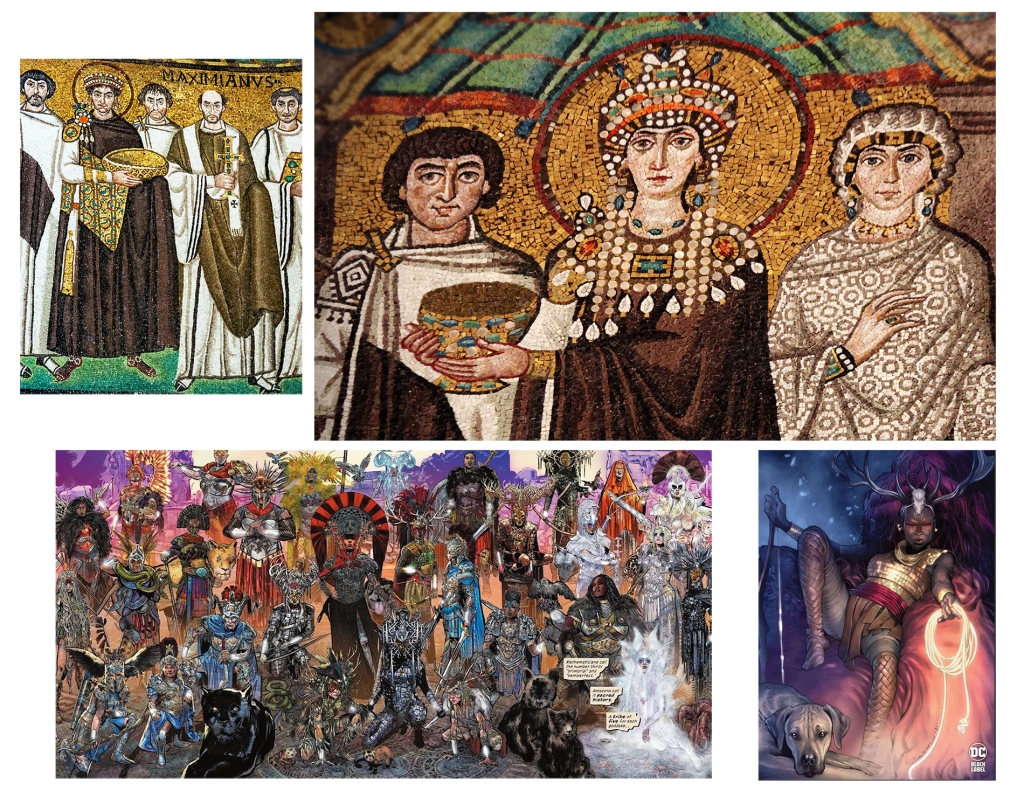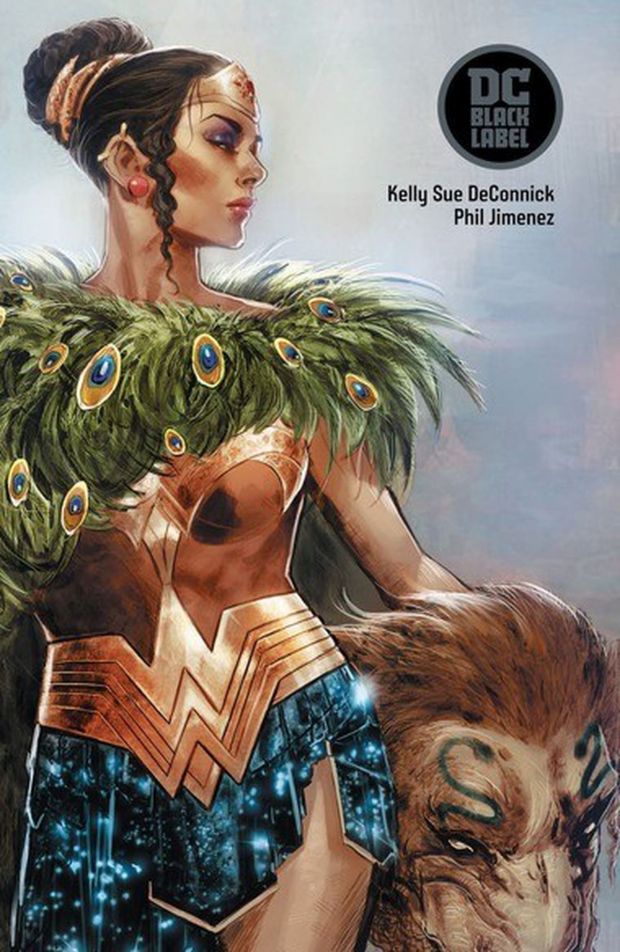“Creativity takes courage.” – Henri Matisse
“Learn the rules like a pro, so you can break them like an artist.” -Pablo Picasso
Pop culture is exactly that: culture that is popular, easy to understand and entertaining. High culture, on the other hand, is more sophisticated and challenging. I love when pop culture meets high culture. This is exactly what we have in Wonder Woman Historia: The Amazons. For those who don’t know, Historia was published via DC comics’ adult imprint, Black Label. DC Black Label is comprised of miniseries that take place outside of the monthly, mainstream story continuity. The books are printed in Prestige Format, which is a square bound comic book with higher quality paper and printing that uses card stock covers.
Phil Jimenez, the lead artist on this title (with colors by Hi-Fi, Arif Prianto, and Romulo Fajardo Jr.), is, along with George Perez, Nicola Scott, and Liam Sharp, one of Wonder Woman’s defining artists. With Historia he and his associates have created something truly groundbreaking in that they beautifully combine various styles of art to tell the early story of the mythical Amazons, which was wonderfully written by Kelly Sue DeConnick.
Perhaps the most dominant visual aesthetic is that of 1960s counterculture psychedelic art. Elements of psychedelic art includes surrealistic subject matters, intense depth and stylization of detail, contrasting colors and elements of collage. Psychedelic art was primarily informed by Art Nouveau, but in Historia, Jimenez also draws inspiration from High Renaissance Art, which is informed by the art of antiquity. Jimenez draws individuals in a manner that recall the works of Michelangelo and DaVinci surrounded in a brilliant, surrealistic psychedelic universe. If you look at the images below you can see the influences: on the left we have a poster created in 1967 by Bonnie Maclean as well as the 2014 album cover for the band Blue Pills created by Marijke Koger-Dunham. On the left are two panels from Historia.

While a wide range of animals are portrayed (which I love especially that panther with Hellene), Jimenez depicts the peacock rather prominently in Historia. In ancient Greek and early Christian art, the peacock was considered a symbol for immortality. Notably, in Greek mythology, the tail of peacock feathers are considered the eyes of the goddess Hera. Jimenez definitely did some deep research here as sometimes comic book artists depict Wonder Woman’s homeland of Themyscira in a generic ancient Mediterranean motif more informed by Hollywood than art history. Below on the left is a terracotta volute-krater (currently on view at The Met) that depicts the Greeks battling the Amazons. The ancient Greeks shared myths to convey their history. Greek artists painted scenes from myths on walls, vases, jars, and cups. On the right we have a panel from Historia.

The Greek philosopher Aristotle, in Sense and Sensibilia, notes sight as the most important of the senses because of color. The significance of color as the ultimate manifestation of sight was fostered in Byzantium, where color was associated with both earthly and heavenly powerfulness. Color in the aesthetics of late antiquity and Byzantium is closely connected to that of light: light and color combine to emphasize brilliance, glitter, and polychromatism. Hi-Fi, Prianto, and Fajardo embrace and execute this brilliance in superb glory. Below are two mosaics from Basilica of San Vitale of Emperor Justinian and Empress Theodora along with two panels from Historia.

Wonder Woman Historia: The Amazons is a seminal work for comic books and a must own. In the spirit of the ancient world depicted in Historia, I would like to conclude this blog entry with some quotes from Aristotle on art.
“Art takes nature as its model.”
“The aim of art is to represent not the outward appearance of things, but their inward significance.”
“Art is a higher type of knowledge than experience.”
